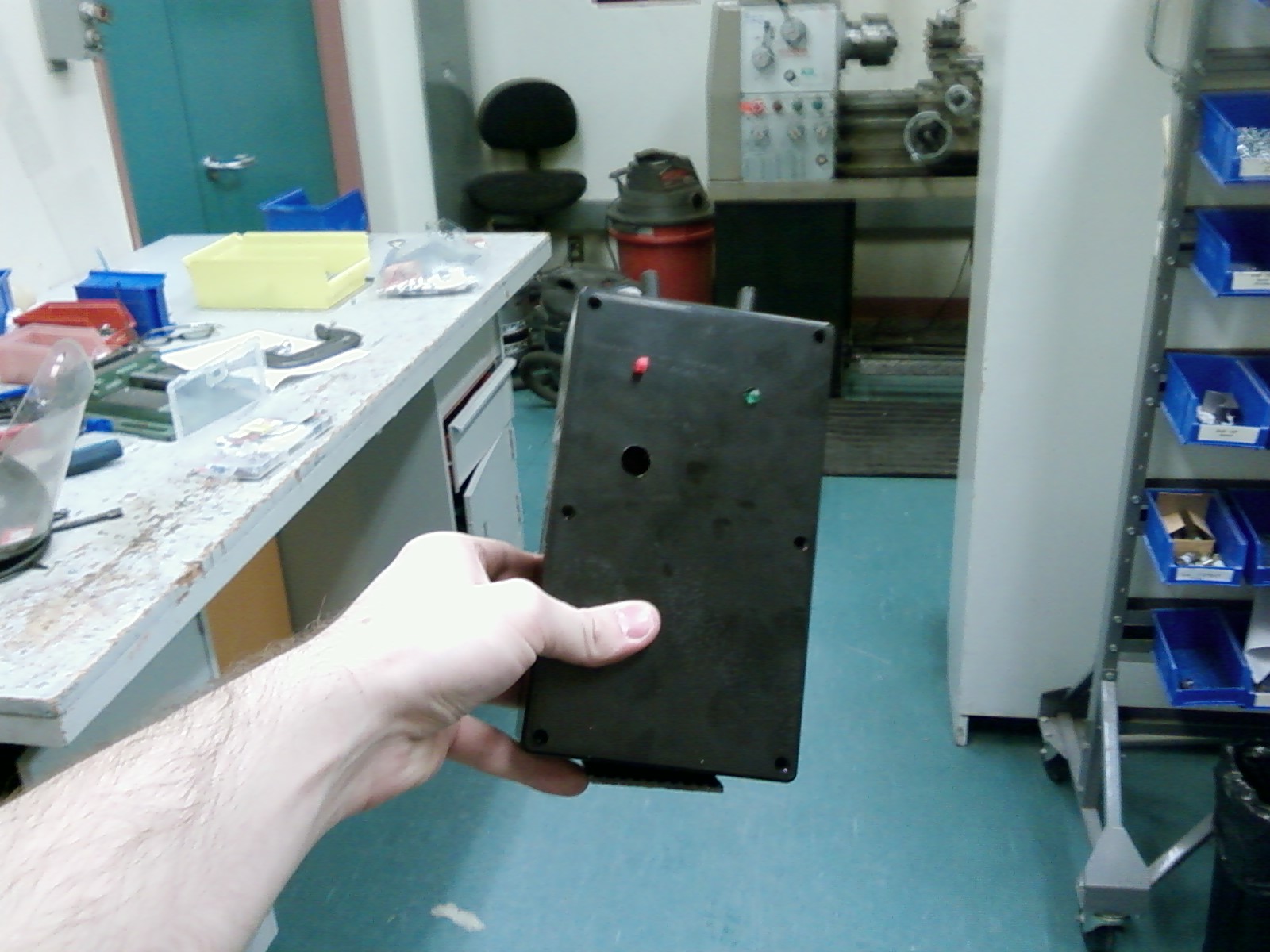In the SFU engineering science program, all students are required to complete a Capstone Engineering Project, which is a course that is a full-time endeavour on its own. My colleagues and I were fortunate to be sponsored by Analytic Systems to design a wireless communications device that could relay data read from a serial port on a personal computer.
System Overview: Essentially, our product works as a wireless bridge to connect the SolarMax charge controller to a central hub which we also designed. The hub allows for multiple interfaces, including direct access via LCD and pushbutton interface, or remote connection via a networked PC or SmartPhone.
With our general system defined, we first set out to design the central hub of the device using a DIY etching station I built, and a lot of soldering and re-soldering home made circuits my team and I designed.
One of our testing boards. We built several boards so that each of us could test one in our spare time.
With the central board built up…
Our redesigned project using a higher quality PCB from Digikey. The design was already small, at less than 4″x3″. Not bad considering it has an entire web server running on it, plus interfaces with our wireless transceiver, LCD, and push button circuits
We then used the Microchip Technologies networking stack to implement a combination of a micro embedded web server and DAC/ADC and GPIO facilities. Kind of like an Arduino before Arduino. It actually powered the presentation we gave in person for our final demo, allowing our profs to login to the web server with an iPhone to test its controls via an HTML/AJAX interface.
Our final project, connected to a wireless router and being controlled via a PC. We later connected several iPhones to it concurrently and it worked flawlessly.
We can’t forget the remote wireless transceivers…
Testing our initial prototype. Were glued to the DMM and oscilloscope for days at some points.

Final device in an enclosure.
The end result was well received by our sponsors, as well as our supervising professors, who not only awarded us exceptional grades, but even noted that given the scope and ambition of our project, it was “on par with two-and-a-half capstone projects” in terms of the work involved. We could not have been prouder.
